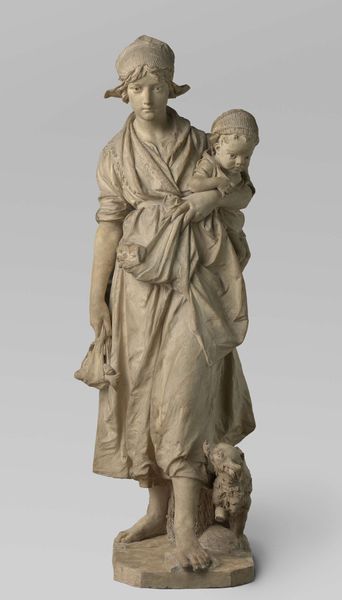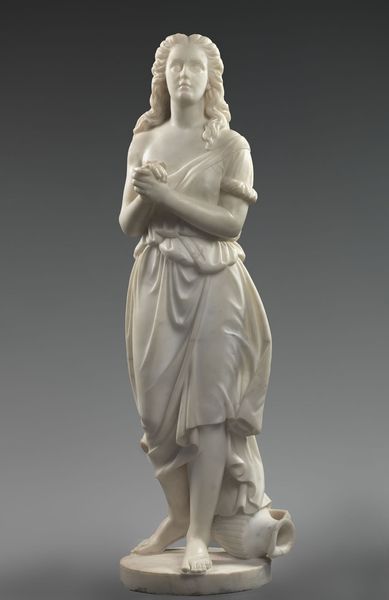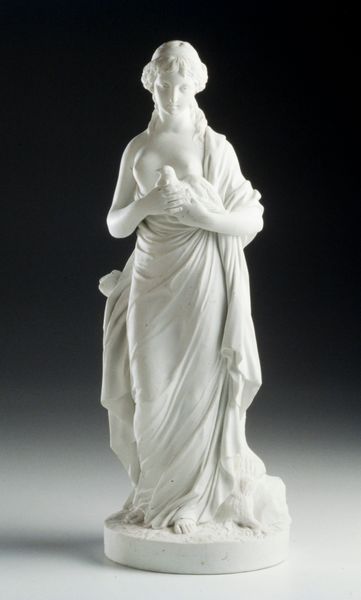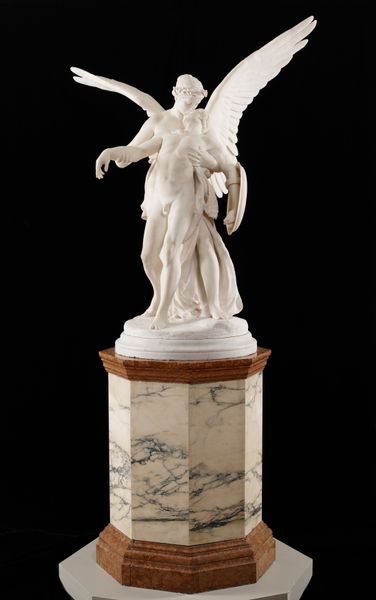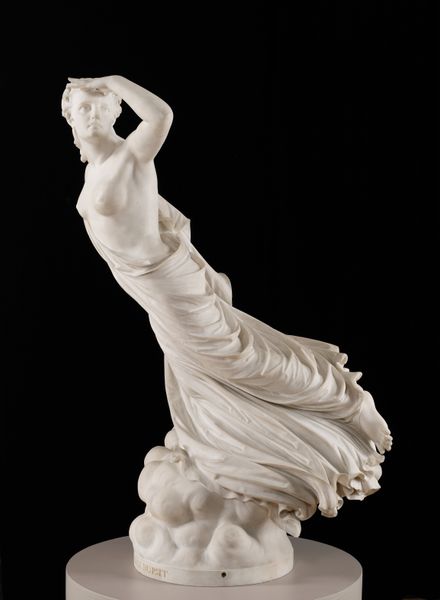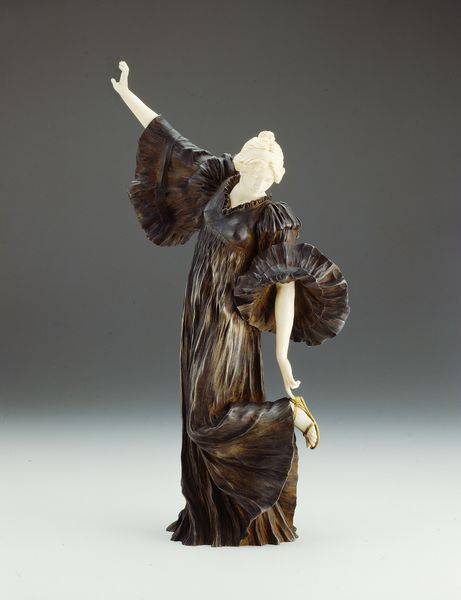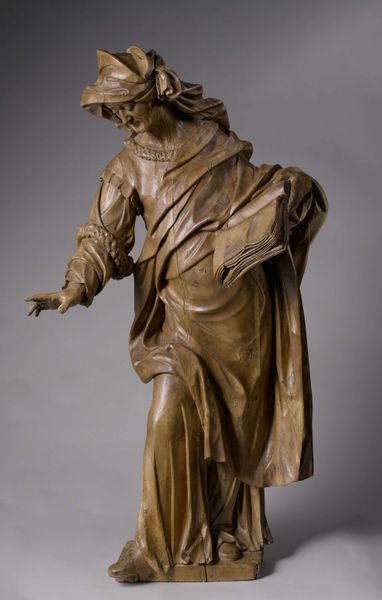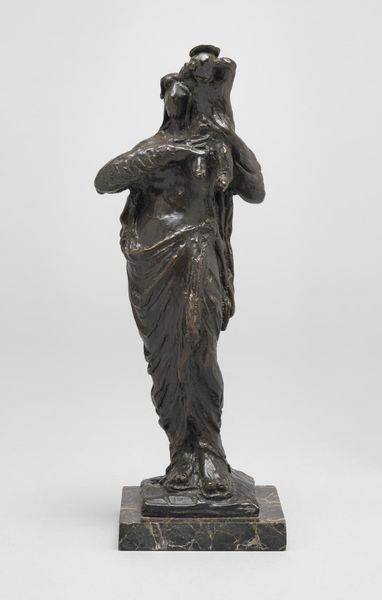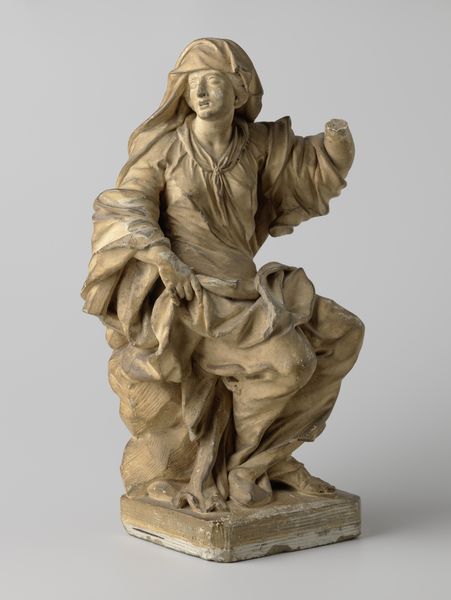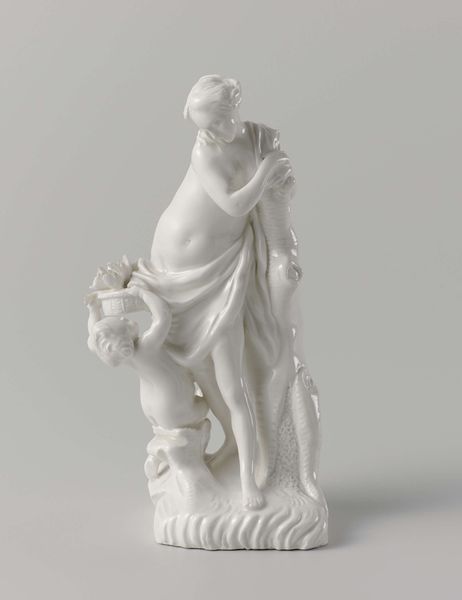
carving, sculpture, wood
#
carving
#
baroque
#
figuration
#
sculpture
#
wood
Copyright: Rijks Museum: Open Domain
Mattheus van Beveren carved this image of Saint John the Evangelist from ivory. The figure’s open palm, reaching upwards, is an ancient symbol, resonating with gestures of supplication, benediction, and witnessing across cultures. We see it echoed in ancient Egyptian art, where figures raise their hands in reverence to the gods. This gesture evolves through the ages; we see it again during the classical period where the orators raise their hands to persuade their listeners, and in early Christian art, signifying divine intervention or testimony. Consider how this simple act transforms: in some contexts, it’s a plea, a silent scream against the heavens, while in others, it’s a symbol of power. This gesture’s capacity to engage viewers on a primal level makes it a compelling force. It stirs something deep within us; a memory of shared human experience. The Evangelist is experiencing extreme emotion as he witnesses Christ's death. The hand raised towards heaven is a visual echo of a primal human need to connect with the divine. This resurfaces, evolves, and takes on new meanings in each context, and will continue its journey.
Comments
rijksmuseum about 2 years ago
⋮
The figures of the Virgin and the Apostle John originally flanked a crucified Christ. The Virgin is represented with an expression of intense sorrow, while he gazes upwards in dismay. Her masterfully carved, flowing robes and her face were inspired by the Italian Baroque. John’s dynamic pose is derived from a famous sculptural group from Classical antiquity, the Laocoön.
Join the conversation
Join millions of artists and users on Artera today and experience the ultimate creative platform.

